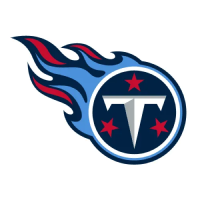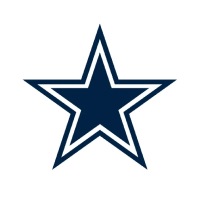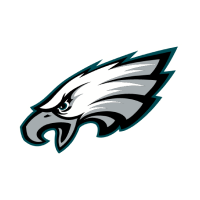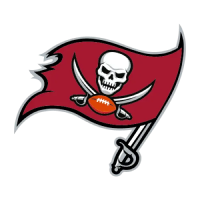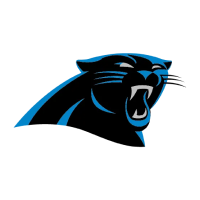Another year, another battle between this year’s offenses and last year’s records—and, of course, another win for the present season over the past.
In 2020, NFL teams are scoring 1.5 points per game more than in any previous season, attempting more fourth downs and two-point conversions, and passing the football with unprecedented success. Such has been the sprint to a yet unseen summit in the recent memory of the NFL, as the balance between offense and defense has never been so lopsided. With the fervent welcoming of college chicanery into the previously undefiled NFL ranks, six of the last seven seasons have seen the average NFL offense generate at least 6.0 Adjusted Net Yards/Passing Attempt (ANY/A)—those are the only six such seasons in history. Before 2004, when illegal contact first became a penalty, the league-wide single-season record for ANY/A was 5.4; the same figure hasn’t been that low since 2008.
With the increase in passing efficiency has also come an increase in rookie quarterback playing time. In 2019, 13 different rookie quarterbacks started a game, which is a record number—in just the last two seasons, nine rookie quarterbacks attempted at least 100 passes. The advantage of a successful rookie-contract quarterback afforded by the 2010 CBA was the greatest competitive edge of the last decade of football, so much so that young quarterback development has become a draft priority even for teams with incumbent starters. When Green Bay and Philadelphia selected Jordan Love and Jalen Hurts in the 2020 NFL Draft despite having big-contract veterans in Aaron Rodgers and Carson Wentz already installed, they did so in acknowledgment that a cheap, good quarterback is the best commodity on the market.
But two synchronous events don’t necessarily enjoy a cause-and-effect relationship. Since that 2004 season, only 13 rookie quarterbacks (24%) have had seasons of an above-average ANY/A out of a possible 54 starters. It’s an unsurprising conclusion, but it is an important one: only one out of every four rookie starters is an above-average passer. Put another way: the average rookie quarterback is bad.
Change it to second-year quarterbacks, and it’s 32% (22 of 68); to third-year quarterbacks, and it’s 44% (24 of 55). The rates improve as the cream rises to the top: atrocious rookie performers like Josh Rosen and DeShone Kizer are not given another opportunity after their debut season to drag the numbers down. Meanwhile, young passers given the opportunity to sit behind incumbent starters and develop, like Colin Kaepernick or Lamar Jackson, take their first snaps as Year 2 players and shine in part due to the gentler, two-year on-ramp that eased them into a starting role.
If the young quarterbacks aren’t galvanizing the league’s humming engine of offensive growth, then the older quarterbacks are. From 1998-2005, the NFL saw five future Hall of Famers drafted in Peyton Manning, Tom Brady, Drew Brees, Ben Roethlisberger, and Aaron Rodgers; fringe Hall of Famers in Philip Rivers, Eli Manning, Donovan McNabb, Carson Palmer, and Michael Vick heard their names called as well; Tony Romo made it from the undrafted ranks. The impossible endurance of high-caliber play from these passers across a shifting vision of the modern NFL passing game forms the chicken and egg of the past 20 years of football: they were all so good for so long because the league made it easier to throw the football, but it also became so much easier to throw the football because these fellas laid the framework for doing it.
Across the last 10 seasons, only Brady and Brees have produced an above-average season without fail, as measured by ANY/A; Rivers and Roethlisberger only missed once; Rodgers and Matt Ryan missed twice. Romo and Manning produced such seasons in every year they were healthy before hanging up their cleats. A group of quarterbacks that largely cut their teeth in the 2000s were never supplanted by an incoming class of younger, brighter, fresher starters. The only quarterbacks to produce with similar consistency drafted after 2008 are Russell Wilson, who has produced above-average seasons in every single season of his career; and Kirk Cousins and Andrew Luck, both of whom have been above-average passers in each healthy season since their rookie years. All were selected in 2012, and all are in their 30s. Only two remain in the league.
That 1998-2005 stretch provided the league with a wave of quarterback talent capable of bridling the boundless creativity of modern passing games and capitalizing on the handicaps dropped on defensive backs. For long and glorious careers that see records jostled over on a weekly basis, their strength ignited the league’s offensive explosion.
But the sun does set on this empire. As Roethlisberger’s arm strength dwindles before our eyes and Rivers’ last-ditch relocation increasingly looks like an empty trip; as Brady and Brees must squash “washed?” questions after every poor performance; as Ryan and Stafford and Cousins peer over their shoulders at yet unnamed draft picks selected to supplant them, it is clear that the old guard must be replaced. Just as we witness their decline, we kick back and enjoy the accompanying rise of their replacements.
Patrick Mahomes is the new prince of the passing game, the best talent since Brady and best quarterback in the league since the moment Andy Reid unleashed him. He was the MVP of the league in his first full year of starting; so was Lamar Jackson, perhaps the best dual-threat quarterback since Vick. From Mahomes’ class comes Deshaun Watson; from Jackson’s comes Josh Allen. Before them was Dak Prescott; after them is Kyler Murray. The only quarterbacks from that group without a career ANY/A above average are Murray and Allen, both of whom are markedly above-average passers in 2020 and have significantly improved in their still-young careers.
The first wave produced at least five Hall of Famers, and to place those expectations on the second wave is fun, but irresponsibly optimistic. They won’t reach that lofty figure; they won’t need to in order to be great. To be great, that group just needs a few more hits, a few more budding franchise passers. And that’s where we turn to the even younger quarterbacks just now peeking over the horizon.
2020’s quarterback class looks like the strongest group since 2012. Justin Herbert is on pace to set multiple rookie records; a few of those, Joe Burrow would break if Herbert didn’t; Tua Tagovailoa is only two games in and is already checking boxes. Those three prospects went within the first six slots of the 2020 NFL Draft, which was the highest density of early-drafted quarterbacks since 1999. Somehow, we could see the same thing happen again in 2021: three quarterbacks all in the top-six or better, with Trevor Lawrence, Justin Fields, Trey Lance, and Zach Wilson all inbound. The young quarterbacks in the league were exciting before the 2020 seasons kicked off—but with the rookies performing above expectation and the incoming quarterback class looking as competitive as ever, there is no reason to expect the momentum to slow.
Perhaps there is an inevitability to it. Perhaps the dominance and persistence of the old guard of record-shatterers crowded the space of quarterback development, shortening patience for young passers as teams hunted for a way to compete with Brady and Brees and Manning. But as time wins all battles and those icons fade away, the sudden vacuum demands that someone fill it, and whichever young passers are around at the time rise to that occasion.
But this is too neat and laissez-faire an explanation to endure the storm of a chaotic sport and all of its inner machinations. No, no—these quarterbacks are for sure good, beyond good, too good to explain away with the wave of a hand. Jackson redefined the value of the running quarterback; Mahomes reconceptualized arm talent and ripped a tectonic shift through Air Raid quarterback evaluations. This is generational talent, and it is embedded in a bedrock of young, rising stars, all of whom are grappling for the mantles left behind by the quarterbacks they idolized in their youth.
There is no passing of the baton, no torch to be handed down from one era to the next—it is a slow transition, difficult to watch from the inside and harder still to separate from the game-to-game noise that is not captured in a season-wide lens. But make no mistake: the cupboards are restocked in the NFL, and with perhaps one more home run quarterback draft, the new stewards of the league’s passing game will take the keys for good, and usher in a new era of stupid, ridiculous, impossible, high-flying football. Best to just strap in and enjoy the ride.
Filed In
Related Articles
NFL Draft
Arik Gilbert Doesn’t Need Big Workload To Be A Top NFL Draft Pick
- Aug 22, 2022
NFL Draft
2023 NFL Mock Draft: Marino 1.0
- Aug 22, 2022
Written By









